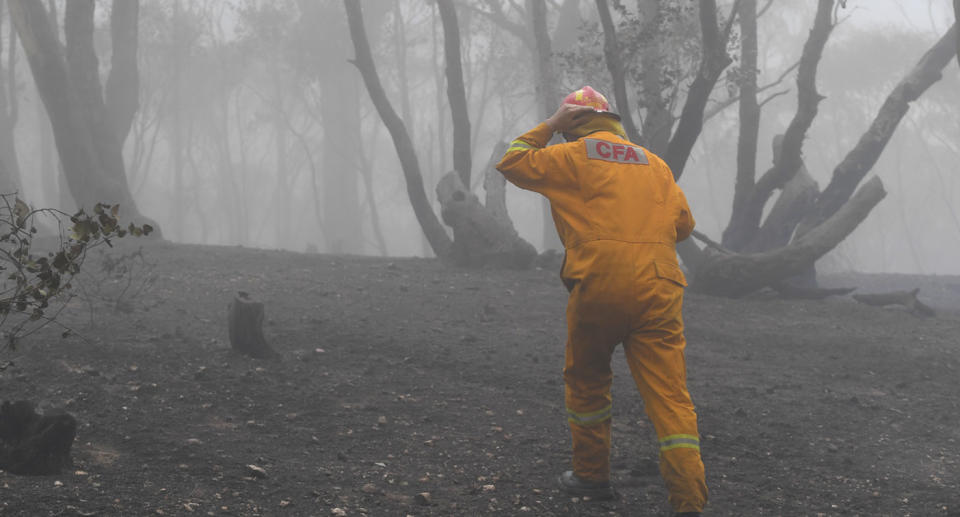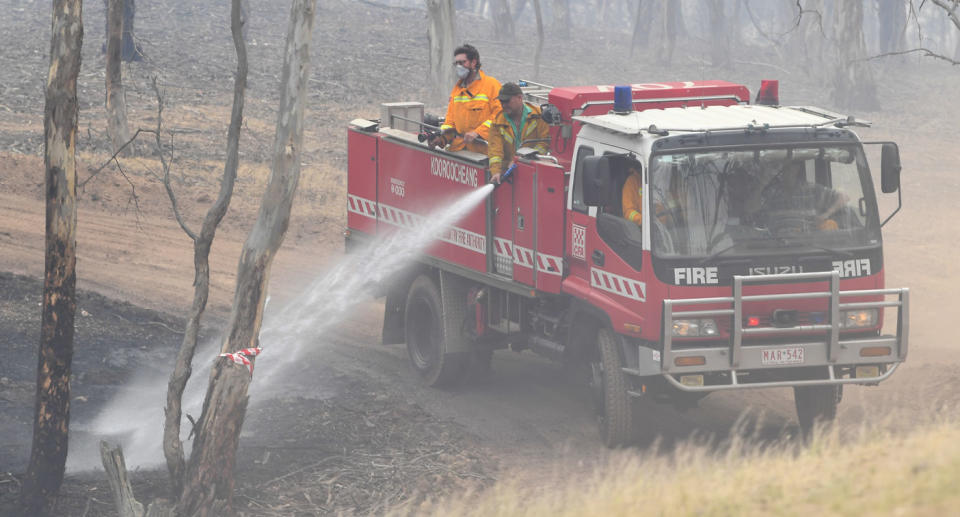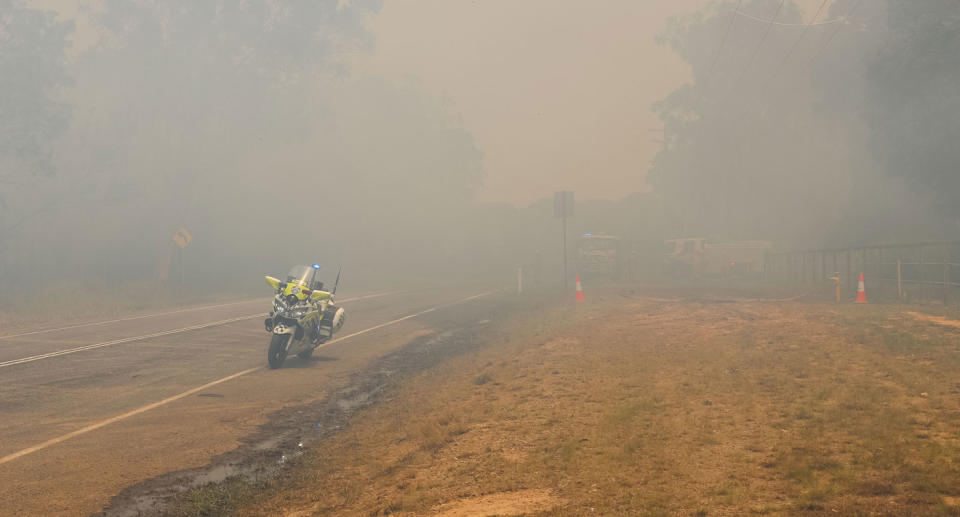Air tankers flown in to fight Victorian blazes, as NSW and QLD crews soldier on
Firefighters are hoping mild weekend conditions will help them control blazes caused by lightning in remote patches of forest in Victoria's northeast.
About 30 bushfires were still burning in Victoria ahead of the weekend, 20 of them located in hard-to-reach forested areas of the state's northeast.
Forest Fire Management Victoria said aircraft including big air tankers from Canberra and Sydney are being used to fight the forest blazes.
"The aim is to get on top of them with the milder conditions," the authority's Hume deputy chief fire officer Aaron Kennedy said.

More than 50 firefighting trucks, dozers and other heavy plant were also set to work on Friday to build containment lines and deal with dangerous trees.
But the remoteness of the fires isn't making their job easy.
"There is a lot of work to do in very difficult conditions," Mr Kennedy said.
More than 150 blazes burned across the state on Thursday, when record-breaking temperatures and strong winds lashed the state.
The CFA believes lightning or campfires started many of them.
Melbourne broke a 100-year-old temperature record for November on Thursday, with the mercury hitting 40.9C and creeping well into the 40s in the Mallee region and northern country towns.

Temperatures cooled on Friday, with emergency services now turning their attention to Monday when the temperature and fire risk are set to rise again, a CFA spokesman told AAP.
On Monday temperatures are expected to reach the high 30s in the state's north - the driest part of the state - and 32C in central Melbourne.
Bushfire victim's brutal messages to ScoMo scrawled on destroyed home
'Like an apocalypse': Thunderstorm and smoke haze plunge Sydney into darkness
Sydney in top 10 of world's most polluted cities with record 'hazardous' air quality
Queensland fire threat downgraded
Meanwhile, Queensland's bushfire emergency declaration has been lifted from all parts of the state following two weeks of ferocious fire conditions and the loss of 20 homes.
The declaration was imposed on November 9 as firefighters battled more than 50 bushfires and thousands of people were evacuated from the path of an out of control blaze on the Sunshine Coast.

One home was lost in the Cooroibah fire, near Noosa. Another 15 were destroyed at Cobraball, in central Queensland, and four at Ravensbourne on the Darling Downs in the days since.
"Over the last few weeks, our state has been in the grips of some very severe and challenging fire weather," Queensland Fire and Emergency Services acting- commissioner Mike Wassing said in a statement.
"While conditions have eased slightly, and the bushfire danger has fallen ... (allowing the declaration to be lifted), we still have significant blazes that continue to burn."
On Saturday, 58 fires continue to burn across the state, however, none are at emergency levels.
Rain brings slight reprieve to crews in NSW
Most NSW bushfires remain at the lowest alert level after rain fell on some fire grounds overnight, while air quality is hazardous in parts of the state.
Early on Saturday morning, 48 fires were still burning in NSW with 20 of those yet to be contained.
One blaze near Jacky Bulbin Flat, Tullymorgan and Mororo in northern NSW has been bumped up to a 'watch and act' alert as fire activity increases.
Greater Sydney, the Central Coast and parts of the mid-north coast and northern NSW received some rain on Friday, with the Rural Fire Service in a tweet saying crews would identify any new fires from thunderstorms.
Do you have a story tip? Email: newsroomau@yahoonews.com.
You can also follow us on Facebook, Instagram and Twitter and download the Yahoo News app from the App Store or Google Play.



